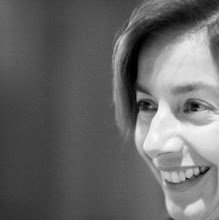And how, bhikkhus, does a bhikkhu abide contemplating the body as a body?
Mindfulness of the body in and of itself, without the filter of identification, comparative thinking, judgements, interpretations. Letting go of the stress of thinking. Keeping it very simple.
Here a bhikkhu, gone to the forest or to the root of a tree or to an empty hut, sits down;
Going to a place where things are simple and where we are supported in our process. A quiet place.
having folded his legs crosswise, set his body erect and established mindfulness in front of him,
Making the choice to plant myself in this place here and now. Taking the time to remind myself, 'I am here'. We are putting aside our life as usually lived, to instead examine life now. Maybe we use a ritual, as is done in zen - rocking back and forth, and side to side, finding our center, before sitting perfectly still.
ever mindful he breathes in, mindful he breathes out.
Breath is always happening and has a rhythm. By following the breath, it is easier to let go of thoughts. This process takes time, and cannot be achieved right away. We find that we can be present more and more as we keep on returning to the breath.
Breathing in long, he understands: 'I breathe in long'; or breathing out long, he understands: 'I breathe out long.' Breathing in short, he understands: 'I breathe in short'; or breathing out short, he understands: 'I breathe out short.'
We are not just following the breath. We pay attention to its characteristics and its sensations. We train the mind to see what's there. For this we have to be relaxed.
He trains thus: 'I shall breathe in experiencing the whole body'; he trains thus: 'I shall breathe out experiencing the whole body.'
We feel the changes in the whole body as the breath moves in and out. Or a particular spot in the body.
He trains thus: 'I shall breathe in tranquillising the bodily formation'; he trains thus: 'I shall breathe out tranquillising the bodily formation.'
A bodily formation is that which is formed/created experience in our body, and is conditioned by what the mind does. As for instance, a tightening up of the body as a result of desiring something. We don't just feel the tension to know it, but also to relax it, particularly as we breathe out. Some tensions can be relaxed, others can take a long time. At the very least, we can soften around the tension. It is easier to pay attention to the physical tension connected with thoughts, and to relax it, than to try to let go of the thoughts. Unless we relax the body, it is hard to let go of the tension in the mind. (feedback loop of some kind). This is why we need to meditate in a place that feels safe.
Sitting this morning, on my usual seat, in the quietness of my home office, I made sure to establish my intent to dwell in the present moment. And I practiced following the breath, returning to it every time the mind wandered off. And I felt the minute changes in my whole body, the expansion and the deflation with each going in and out of breath. And I became very aware of the familiar tightness in the midst of the stomach. A long held tension, that I could only hope to appease. Sending my attention to other parts of the body as well. The feet, the hands, the spine, . . . relaxed. Feeling what it's like to be at ease. Thoughts relaxing as well.
Acknowledging this latter point as
wisdom, inherited from Ruth during my retreat with her last year:
'I went to her [Ruth Denison] wondering what to do about familiar experience of irritation and tightness in the throat and the stomach. In the past, I had followed other teachers' instructions to linger on the unpleasantness, and it had not worked. Ruth had a different take. "Don't focus on it. The energy is blocked there. Turn your attention to your hands instead, and feel them. Slowly move them up and down. Do you notice any change? What do you feel? Now open and close them. Feeling anything? Then now, rest your hands on your lap, and feel." So simple.
Now, will you join me? Mindfulness of the body, as a gateway to inner freedom . . .





















